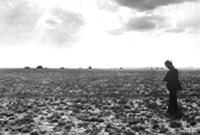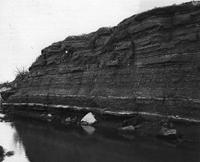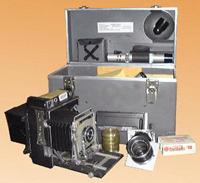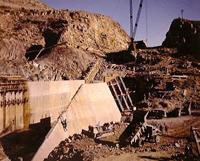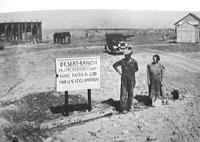- Reclamation
- Missouri Basin and Arkansas-Rio Grande-Texas Gulf
- Multimedia
- Reclamation Captures the Past - The Bureau Photographers Work
Reclamation Captures the Past - The Bureau Photographers Work
|
Photographs seen on the Glimpse the Past pages are a result of documentation of Reclamation Projects since the agency began in the early 1900's. Photographs were commonly used in the early years to document the benefits of Reclamation projects. |
|
Construction techniques and the resulting structures were often on the cutting edge of technology and were recorded on film by a resident photographer or an engineer with some photographic experience. As Reclamation matured, construction photography evolved to document the performance of contractors. This served to limit the opportunity for additional payment claims against the agency by contractors as well as to ensure their performance. The photos also served as a source of information about the site and construction of project facilities for their future operation and maintenance. As a result, many of the images taken by Reclamation are technical in nature and are not suitable for public display. |
|
Some Reclamation images are quite well known. Some projects created large numbers of images that span their entire history. Most of these images in the Missouri Basin Region now reside in the collections of the National Archives and local historical societies. |
|
Photographers often used bulky equipment and processed film and prints under primitive conditions. One primary consideration for the photographs taken was the ability to store them for long periods without deterioration. For that reason black and white images were common until the 1980's. Large format (4 by 5 inches or larger) film and cameras were used by most photographers. Roll film cameras were rare and were usually reserved for less experienced personnel that took photographs only as a part of their duties. |
|
|

